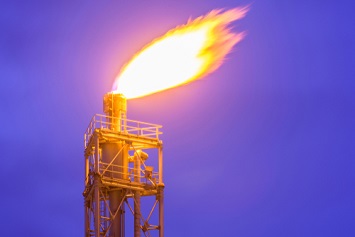In September 2018, the Department of the Interior’s Bureau of Land Management (BLM) promulgated amendments that eliminated or replaced most provisions of the Waste Prevention, Production Subject to Royalties, and Resource Conservation final rule the Obama administration issued in 2016. However, several 2016 provisions were retained with modifications, including a provision relating to measuring and reporting volumes of gas vented and flared, which we describe here.
The 2016 action updated older BLM provisions that allowed royalty-free venting and flaring by operators with oil and gas (O&G) leases on public land. The intent of the rule was twofold—require reductions of venting and flaring to ensure that taxpayers benefited from royalties and cut down on emissions of methane, the main ingredient of natural gas—a potent greenhouse gas. The 2018 amendments discarded most of the 2016 rule, including requirements that lessees develop waste minimization plans and undertake measures to collect gas that reached the surface during and after hydraulic fracturing.
Similar Requirements
As the BLM describes it, the two sets of measurement requirements for vented and flared gas (43 CFR 3179.9 in the 2016 rule and 43 CFR 3179.301(a) in the 2018 amendments) are “essentially the same.” The one key difference relates to measurement when the volume of gas flared exceeds 50 thousand cubic feet (Mcf) per day.
Under the 2016 rule, operators were required to use estimation protocols or measure (using a metering device) all flared and vented gas, whether royalty-bearing or royalty-free. However, more specific requirements applied when 50 Mcf or more of gas is flared per day. Specifically, when this volume threshold is met, the operator was required to either measure the volume of the flared gas or calculate the volume of the flared gas based on the results of a regularly performed gas/oil ratio (GOR) test, which allowed the BLM to independently verify the volume, rate, and heating value of the flared gas. Operators were required to report all volumes of vented or flared to the BLM. Also, operators were allowed to flare gas from specific multiple leases or areas to a common point.
The 2018 rule provides three measurement options. Operators may:
- Estimate or measure the vented or flared gas in accordance with applicable rules, regulations, or orders of the appropriate state or tribal regulatory agency;
- Estimate the volume of the vented or flared gas based on the results of a regularly performed GOR test and measured values for the volume of oil production and gas sales to allow the BLM to independently verify the volume, rate, and heating value of the flared gas; or
- Measure the volume of the flared gas.
Threshold Removed
The 2018 rule places no limit on the amount of flared gas that may be estimated. The BLM somewhat limited this provision by providing itself with the authority to require the installation of additional measurement equipment whenever it is determined that the existing methods are inadequate to meet the purposes of its waste prevention and resource conservation program.
Several commenters objected to the amendments. One commenter said the provision authorizing the BLM to require the installation of additional measurement equipment is too broad and vague. According to another commenter, the absence of restrictions on self-reporting by operators invites abuse of the system, limits accountability for gas that is lost, and deprives taxpayers of assurance that they will receive the royalties to which they are entitled. Others noted that the BLM cannot address a problem if it does not have accurate and timely measurement information. Still others were concerned about the adequacy of state and tribal rules regarding flaring volume estimations.
“Even if the BLM had determined that all applicable state and tribal rules were equally effective as the BLM standards for accurately estimating flaring volumes, it is inappropriate for the BLM to defer across the board to state and tribal standards that could be changed or weakened,” the commenters stated.
Federal Interest
The BLM responded that the provision that allows it to require additional measurement to provide for more accurate measurement when flared volumes are large is sufficient to ameliorate measurement uncertainty. Furthermore, says the BLM, an upper limit on the volume of gas estimated is not needed because it does not consider the percentage of federal interest in the flared volume. The federal government collected $2.5 billion in revenue from onshore oil, gas, and coal production on federal lands in 2016, including about $2 billion from royalties.
“The risk of inaccurate measurement for royalty payments is positively, directly related to federal interest and flared volume,” said the BLM.
The 2016 rule was published in the November 18, 2016, Federal Register (FR); the 2018 amendments were published in the September 28, 2018, FR.

